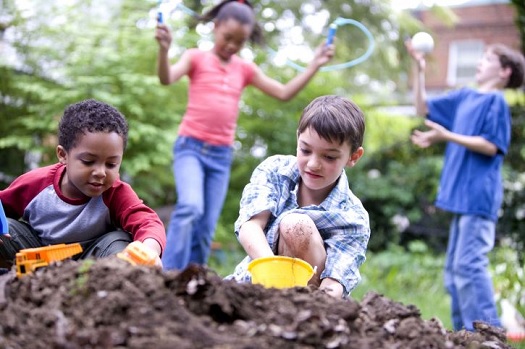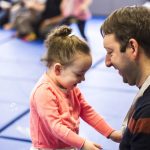
Our children start to notice differences as infants, and they pick up racial differences as toddlers. All children put things and people into groups. They form opinions about these categories early in their development. We as their parents may have been told to stay silent about racial differences, to act like there are no differences, to behave as though everyone is just one big happy family, but our children know different.
Children form their own opinions and conclusions if we’re silent. That’s why it’s crucial we have conversations about race (and other differences) early.
This doesn’t mean you’re judging your child. It means you’re saying you noticed their observations, and you either agree with it or disagree with it. It’s fine if your child notices the difference in skin color or any other physical feature, but intervene when they are only comparing skin color. Here’s how:
Give them tools.
Children learn best by play, especially when they’re playing with each other. If your neighborhood is not racially (or culturally, or otherwise) diverse, find playgrounds, schools, festivals, or friends who are. This doesn’t mean you find someone to assuage your guilt, your one friend who is different. It means immerse your family in other cultures sometimes.
If your child’s toy box is full of dolls of one kind, buy them dolls of different genders, skin tones, and professions. Buy books and games that talk about diversity and human differences.
Give them guidance.
You do this by sharing your opinions. It’s fine to talk about race as long as we as parents are not making it seem negative. If your child comes home saying her friend has brown skin, you might also talk about her beautiful hair, her fashion sense, her new lost tooth, or that she likes ponies just like your daughter. Make sure that friend isn’t just identified by skin color, and guide your child to notice the similarities in her and her friend, as well as the differences.
Speak up. Embrace diversity with your tone as much as your words. You don’t have to have all the answers. Your child has opinions, too. Ask questions when you don’t know what to say, such as, “Do you think it’s fair that no one on the Cheer team has black or brown skin?” Learn as a team. Your child has a lot of wisdom to share with you, too.
Walk your talk.
Act like the parental role model you are.
Mr. Rogers used to say, “When bad things happen, look for the helpers.” Make sure you give your child hope when they discover injustice by pointing out the people who are helping not hurting, who are calm, not violently angry.
Become a helper yourself. Make sure you reach out to people of all colors who are less fortunate than you are. Volunteer, fund-raise, lend a hand. Your children will notice. Helping others is not only telling them how things can change, it’s showing them how to change things.
Stop being embarrassed. Start talking. Start helping. Only with dialogue and interaction can we work for our kids and with our kids to make their world a better place.
Like what you read? Also check out our latest FREE online classes, parenting advice, jobs for moms, events, childcare listings, casting calls & raffles, and our Parents With Nannies Facebook group.
Kathryn Brown Ramsperger is a life coach, humanitarian, mom, and the author of the award-winning intercultural love story The Shores of Our Souls. For more information about her writing, visit http://shoresofoursouls.com. For coaching information, you can find her at http://groundonecoaching.com.
The views and opinions expressed on this blog are purely the blog contributor’s. Any product claim, statistic, quote or other representation about a product or service should be verified with the manufacturer or provider. Writers may have conflicts of interest, and their opinions are their own.



